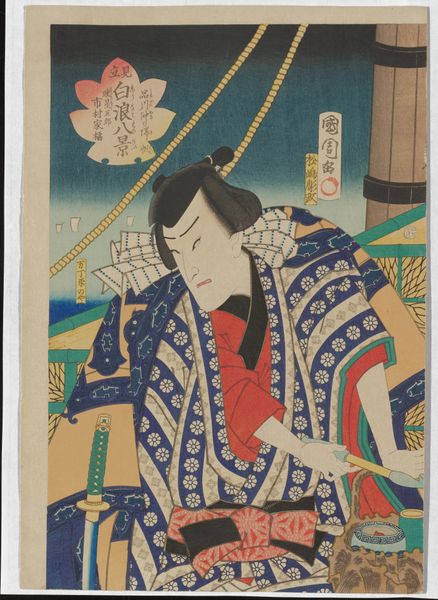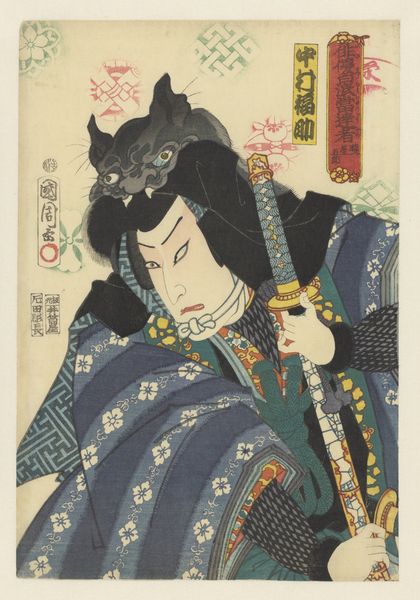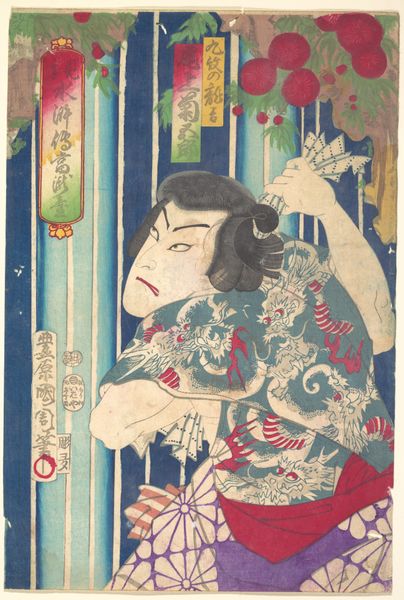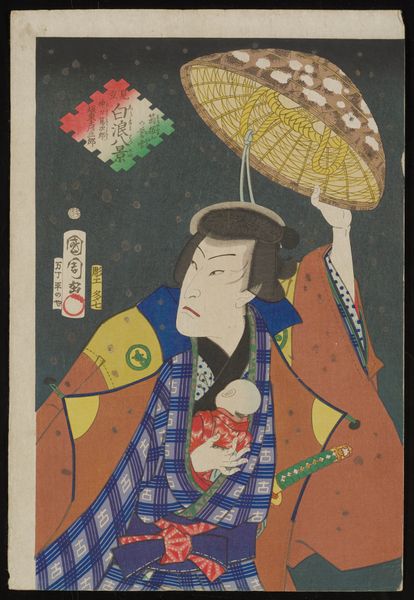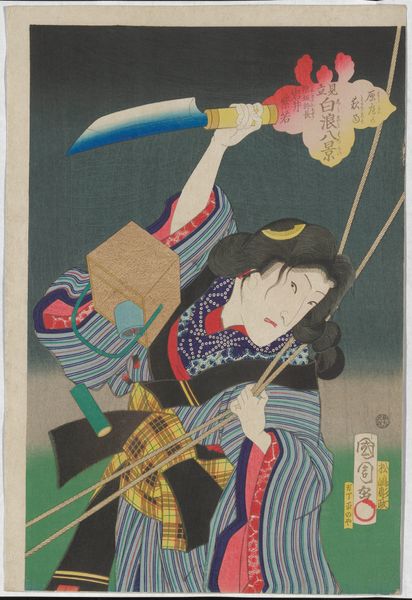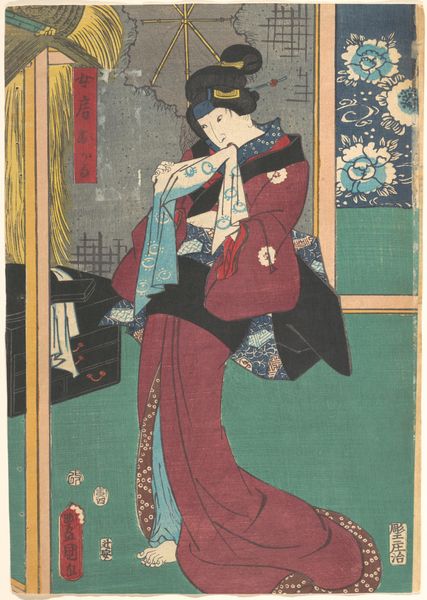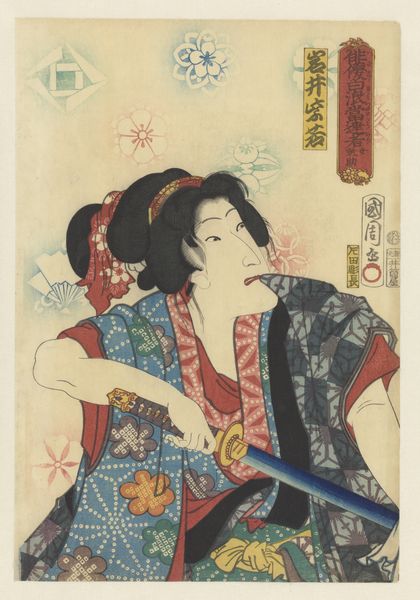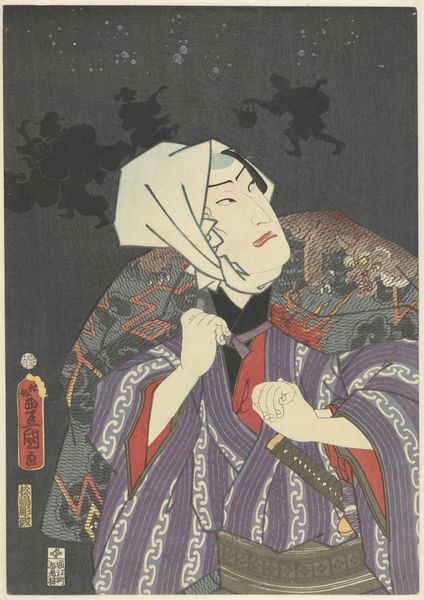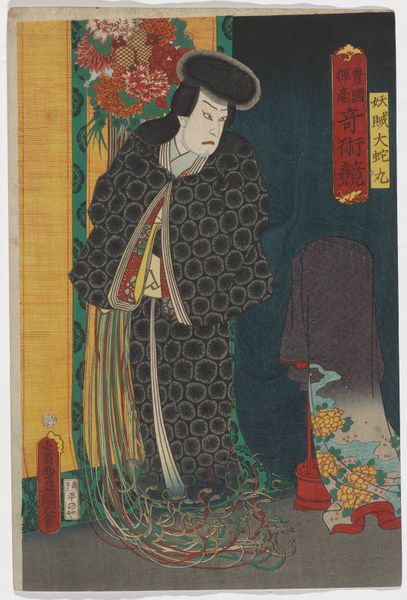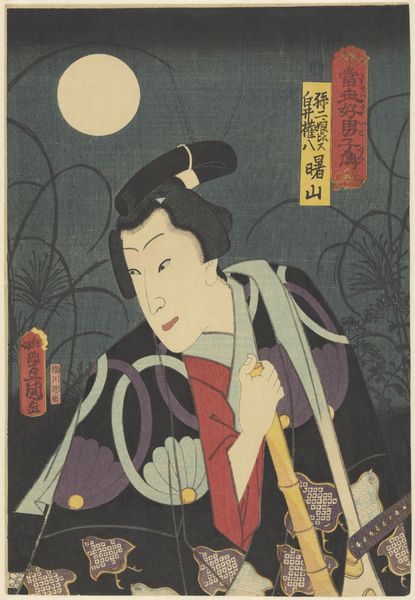
Autumn Moon at Sunamura- Actor Nakamura Shikan IV as Ōdera Shōbei Possibly 1865 - 1867
0:00
0:00
print, ink, woodblock-print
#
portrait
# print
#
asian-art
#
ukiyo-e
#
japan
#
figuration
#
ink
#
woodblock-print
#
naive art
Dimensions: 14 7/8 × 10 3/8 in. (37.78 × 26.35 cm) (sheet, vertical ōban)
Copyright: Public Domain
Toyohara Kunichika’s woodblock print presents Nakamura Shikan IV in character as Ōdera Shōbei. The actor is depicted in a moment of artistic expression under the tranquil observation of the autumn moon. The composition is structured through a striking contrast of light and shadow, with a nocturnal backdrop emphasizing the pale figure of the actor. Kunichika employs a sophisticated use of line and shape. Note the geometric patterns on the robe, which contrast with the soft, round moon and the actor’s face. These visual elements do not merely represent; they actively construct a semiotic system. The flute, positioned horizontally across the actor’s face, creates a visual pause, inviting reflection on the performer's role. The lantern and sword at the actor's side suggest layers of narrative content, hinting at the duality of artistic expression and martial prowess. Ultimately, the interplay between the artwork’s formal structure and its cultural symbols invites us to question the fixed categories of identity and representation within the dynamic world of Kabuki theatre.
Comments
minneapolisinstituteofart almost 2 years ago
⋮
Since the 17th century, The Eight Views–originally referring to scenic spots around the Chinese Xiao and Xiang Rivers–has been a well-established theme in Japanese art. Here, the eight locales are taken from famous places in the city of Edo (present-day Tokyo) and are juxtaposed with popular actors in the roles of well-known thieves and robbers. Kabuki plays on the underworld were popular during the mid-19th century, especially during the hot summer months when this series was put on the market, as the storylines were meant to give viewers a chill.
Join the conversation
Join millions of artists and users on Artera today and experience the ultimate creative platform.
